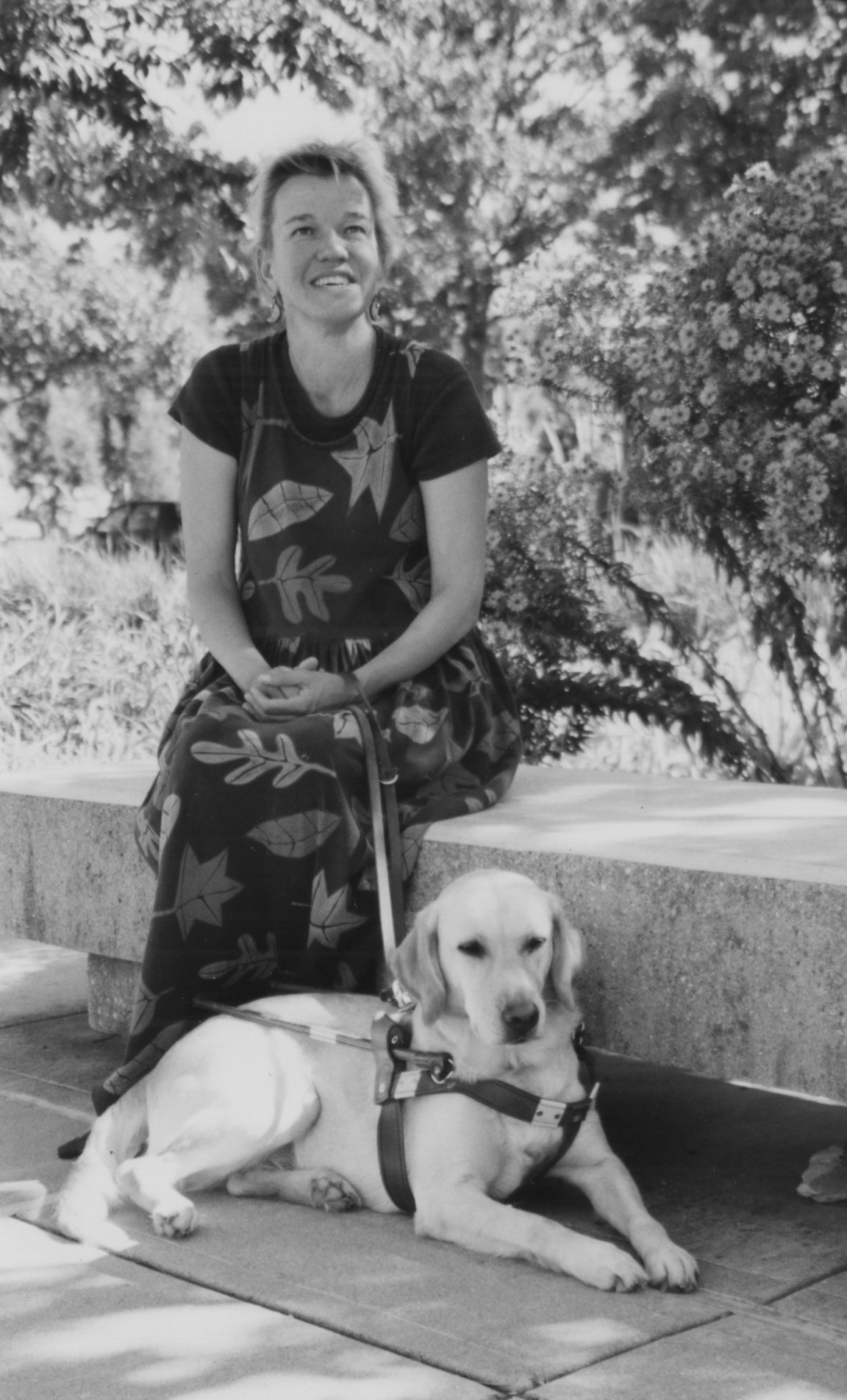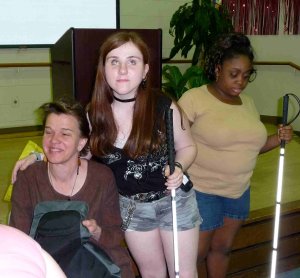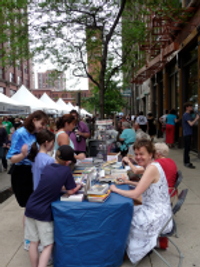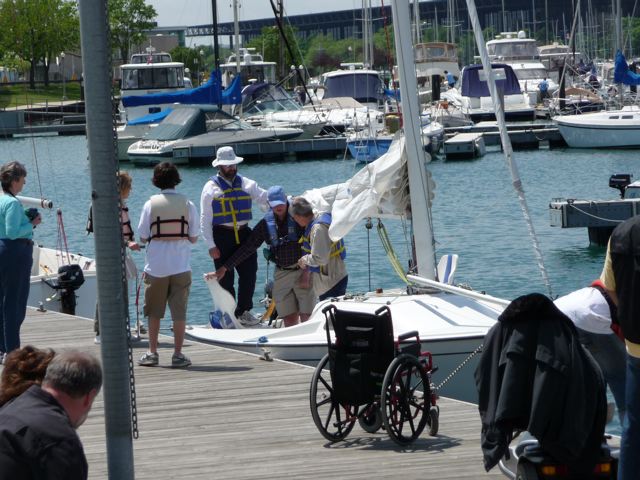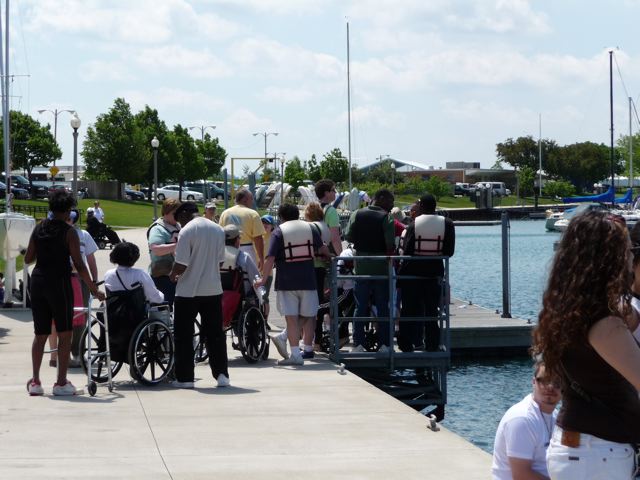Pro Wrestlers Don't Give Pedicures
June 27, 2008 • 15 Comments • Posted in book tour, guide dogs, Seeing Eye dogs, travel, Uncategorized, Writing for ChildrenPro wrestlers don’t give pedicures.
At least Atlas Horn doesn’t. Atlas (he claims this is his given name!) is a groomer at Doggie Bath House, a new business right down the street from us. I brought Hanni to Doggie Bath House yesterday to get spruced up for our upcoming trip to California. I wanted Hanni to get her nails painted for the big event — we’re accepting our ASPCA/Henry Bergh Children’s Book Award during a cocktail reception at the American Library Association annual conference on Monday.
“We don’t do nails,” “we don’t paint nails,” the owner told me right away. “We only do nails as in nail trims.”
For a short moment I considered going elsewhere. But when the owner introduced us to Atlas, I knew we had to stay. How could I deny Hanni the chance to be bathed by a pro wrestler?
Atlas grew up with dogs, he told me. Dog grooming seemed the perfect way to supplement his pro-wrestling income. “You can make good money wrestling,” he said. “But I have a daughter now.”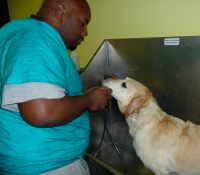
Does the responsibility of fatherhood make a pro wrestler more careful in the ring, less interesting to the audience? Does the thought of a daughter at home distract him from crushing his opponent? Do you get paid less if you lose? Atlas never explained. What’s more likely, I figure, is that fatherhood forces Atlas to cut down on travel to faraway cities. There are 12 venues for pro-wrestling in Chicago, he said. “But the work is only there on weekends.”
And so, during the week, Atlas grooms dogs.
Hanni tried to be stoic in the pro wrestler’s presence, but truth is: she hates getting soaked. She hardly ever gets bathed, really. Think about it. Guide dogs don’t need baths as often as other dogs. Guide dogs are pretty much always attached to their owners. Unless we go playing in mud puddles, or get caught up with skunks, or tangle ourselves in brambles, our dogs stay pretty clean. The guide dog schools teach us how to brush and comb our dogs, and if we do that every day, baths are unnecessary.
For our special day in Anaheim, though, I wanted Hanni to sparkle. The trip to Doggie Bath House was worth it. Her nails may still be the same black color they were when we entered the place, but now, thanks to Atlas, her fur coat absolutely shines!
